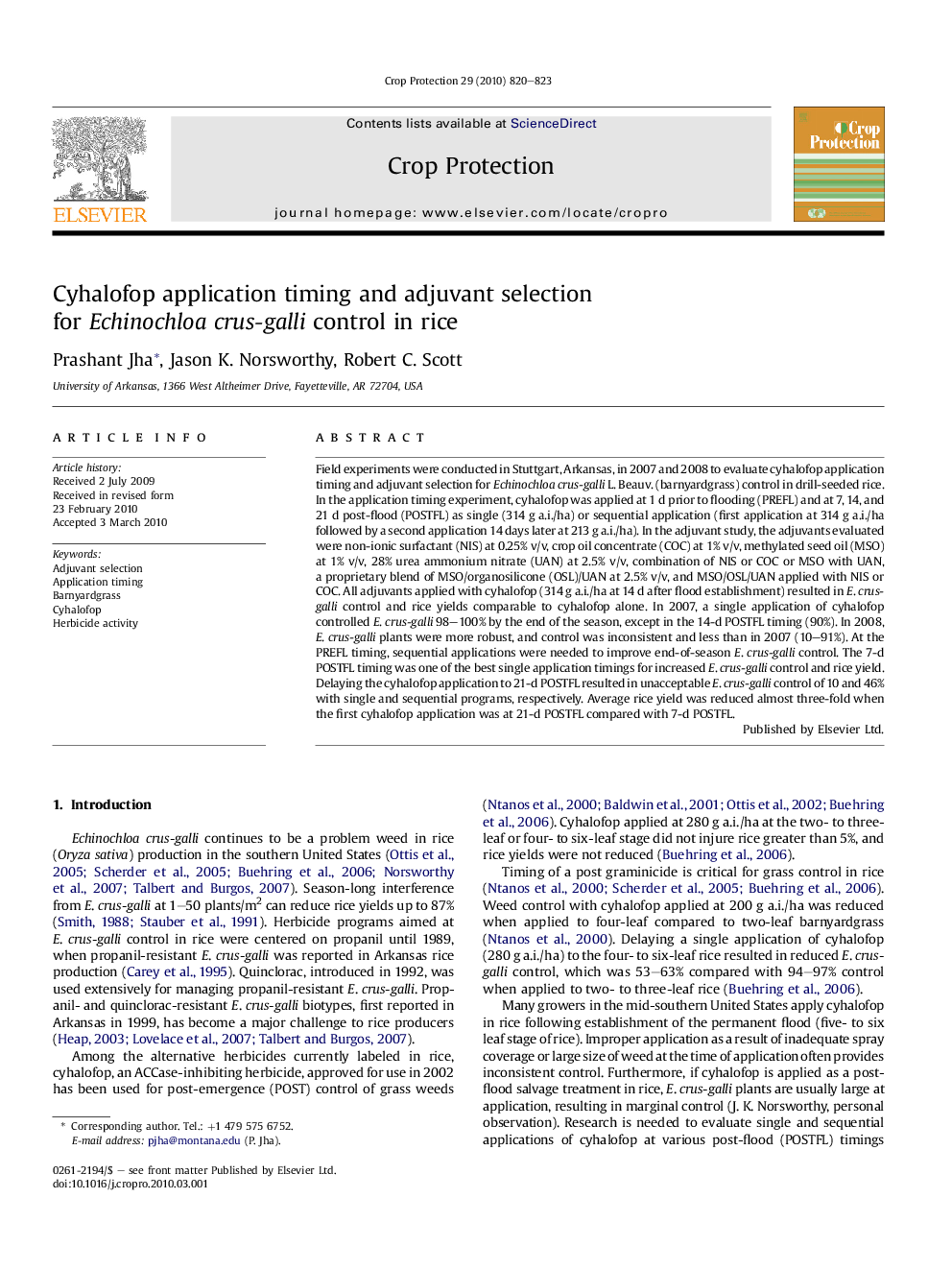| Article ID | Journal | Published Year | Pages | File Type |
|---|---|---|---|---|
| 4506735 | Crop Protection | 2010 | 4 Pages |
Field experiments were conducted in Stuttgart, Arkansas, in 2007 and 2008 to evaluate cyhalofop application timing and adjuvant selection for Echinochloa crus-galli L. Beauv. (barnyardgrass) control in drill-seeded rice. In the application timing experiment, cyhalofop was applied at 1 d prior to flooding (PREFL) and at 7, 14, and 21 d post-flood (POSTFL) as single (314 g a.i./ha) or sequential application (first application at 314 g a.i./ha followed by a second application 14 days later at 213 g a.i./ha). In the adjuvant study, the adjuvants evaluated were non-ionic surfactant (NIS) at 0.25% v/v, crop oil concentrate (COC) at 1% v/v, methylated seed oil (MSO) at 1% v/v, 28% urea ammonium nitrate (UAN) at 2.5% v/v, combination of NIS or COC or MSO with UAN, a proprietary blend of MSO/organosilicone (OSL)/UAN at 2.5% v/v, and MSO/OSL/UAN applied with NIS or COC. All adjuvants applied with cyhalofop (314 g a.i./ha at 14 d after flood establishment) resulted in E. crus-galli control and rice yields comparable to cyhalofop alone. In 2007, a single application of cyhalofop controlled E. crus-galli 98–100% by the end of the season, except in the 14-d POSTFL timing (90%). In 2008, E. crus-galli plants were more robust, and control was inconsistent and less than in 2007 (10–91%). At the PREFL timing, sequential applications were needed to improve end-of-season E. crus-galli control. The 7-d POSTFL timing was one of the best single application timings for increased E. crus-galli control and rice yield. Delaying the cyhalofop application to 21-d POSTFL resulted in unacceptable E. crus-galli control of 10 and 46% with single and sequential programs, respectively. Average rice yield was reduced almost three-fold when the first cyhalofop application was at 21-d POSTFL compared with 7-d POSTFL.
